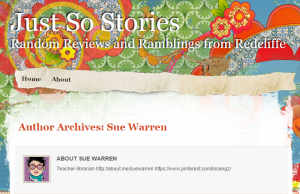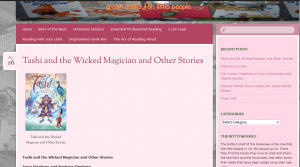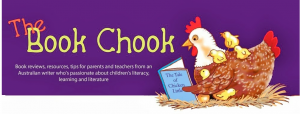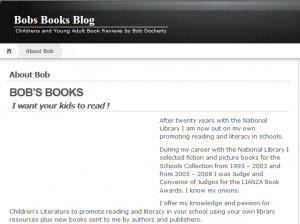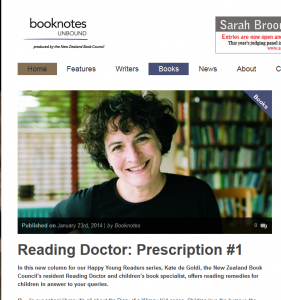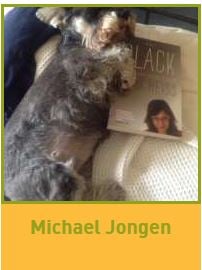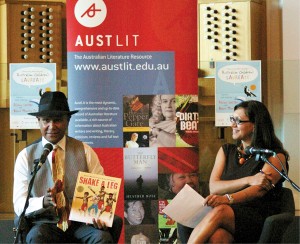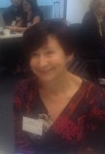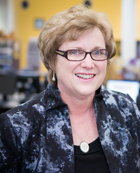There is a government primary school I know that has its fiction and non-fiction resources distributed throughout its classrooms. These resources used to be all together in one small room, but that room was recently put to other uses. As far as I know, there is no catalogue or database to organise these resources. Perhaps there is a spreadsheet printed out on a pin-board somewhere. I suppose that situation can work if children are happy to browse, or know who to ask about where to find the specific topic or item they’re looking for.
When I went to primary school in Queensland in the 1980s, the library was most definitely a distinct ‘place’. I remember very little about most of my classrooms, but I have vivid memories of the library.
The library at Kenmore State School was a brick building, separated from the junior classrooms by an undercover concrete pathway whose cracks, I recall, were infested with girl germs. If you went too far, you got to the dusty staff car park (out-of-bounds!), and then the swimming pool. Lunchtimes often saw me playing ‘tiggy’ and ‘brandy’. Less often I was on the oval trying to play sports that required two ‘C’s that weren’t my strong points – competitiveness and co-ordination. On many lunch breaks I found myself in the library.
The librarian was as constant to that school as the steel pipe gate and bitumen assembly area (complete with yellow dots indicating foot positions for ‘Attention’ and ‘At ease’). I think her name was Mrs Fielding. The bulk of the library consisted of low shelves at about head height, with non-fiction works laid out in Dewey. Behind Mrs Fielding and our borrowing cards was an area of perhaps four square metres, where the junior fiction was placed on low shelves and in browseable tubs. A few beanbags were thrown around on the plush and vibrant carpets.
On the other side of the library were the tall shelves which enclosed the big-kid’s books. To me, this space had a private and arcane feel. As a younger kid I heard the snickering of older boys in there, and wondered what schemes they were cooking up. I once ventured in and picked a big-kid chapter book at random. It was on the second shelving unit to the right, third shelf from the bottom (I am seeing it as I type), and it was called Comet in Moominland by Tove Jansson. Flicking through the pictures, some combination of the book and the room gave me a distinct feeling, which I know today as being called ‘otherness’. There was something frightening, wonderful, and sacred about that book and that place in that moment. I still get a vestige of that feeling when I read it to my children.
I grew up to be one of those scheming boys. One of my favourite places to scheme with my gang (the ‘Super Sneaky Team’) was the library courtyard. The courtyard had a few timber-slat benches painted government-issue chocolate brown. Beside and amongst the brick paving there were a few shrubs and a paper-bark tree. There were broad-leaved vines growing over a high timber fence that was painted to compliment the benches. Our main – and perhaps, only – scheme was to wander past Mrs Fielding, and exit the sliding door into the courtyard where we would engage in some innocent banter to dispel suspicion. We’d do that for a prudent time, then slip off to the far corner, which was invisible from the Fielding vantage point, and scale the fence. After celebrating our super-sneakyness we’d wander off somewhere else. Perhaps the oval.
I wonder if the library still has that courtyard?
In about 1985, the library installed the first computer available for student use. It was something along the lines of the RadioShack TRS-80 MC-10. Mrs Fielding was very encouraging of me to use it, and I began to imagine she purchased it just for me. In a tiny corner near the back entrance to the senior fiction area, I learned to program in Basic, and to save my experiments on magnetic tape. I can easily imagine my life would be very different if Mrs Fielding hadn’t set me up with that machine in that little corner. I almost certainly wouldn’t be in this job, writing this article.
I regret to tell you that by the time of my final year at Kenmore State School the Super Sneaky Team had been disbanded for some years. We had creative differences about the role of sport at lunch-time, and I once fought Sandy in the mud for an hour in an attempt to resolve it. I’d landed in a new, geekier, crowd and we spent most lunch times playing role-playing games. In the library.
(My mum forbade me from playing those games – she said they were satanic, and they were the reason my friend Tom talked in his sleep when he came for sleepovers. But I was addicted, so I had to learn to be dishonest with her.)
I recall one day in particular. We’d pushed together two (brown) laminate trapezoid tables near the doors to the courtyard. I was waiting for my turn to create a character. I gazed over the heads of my friends to the high louvre windows on the far side of the library, where, despite the film of dust from the staff car park, I could see the sky, and the trees on the hill above the shopping centre. It was raining. I was aware of the cold and wet outside by virtue of comparison with the warmth and comfort inside the library. I was aware of hushed conversation, of kids moving calmly amongst the non-fiction shelves, of Mrs Fielding stamping somebody’s card. I’d forgotten my friends, and like my first venture into Moomin Valley, I was lost in my own tranquil place. That moment is my single strongest memory of my primary school library.
I’d like to go back there one day. I don’t know if the building is still being used as a library, or whether it is even still standing. If anybody knows I’d love to hear from you.
Ben Chadwick
Manager, SCIS


